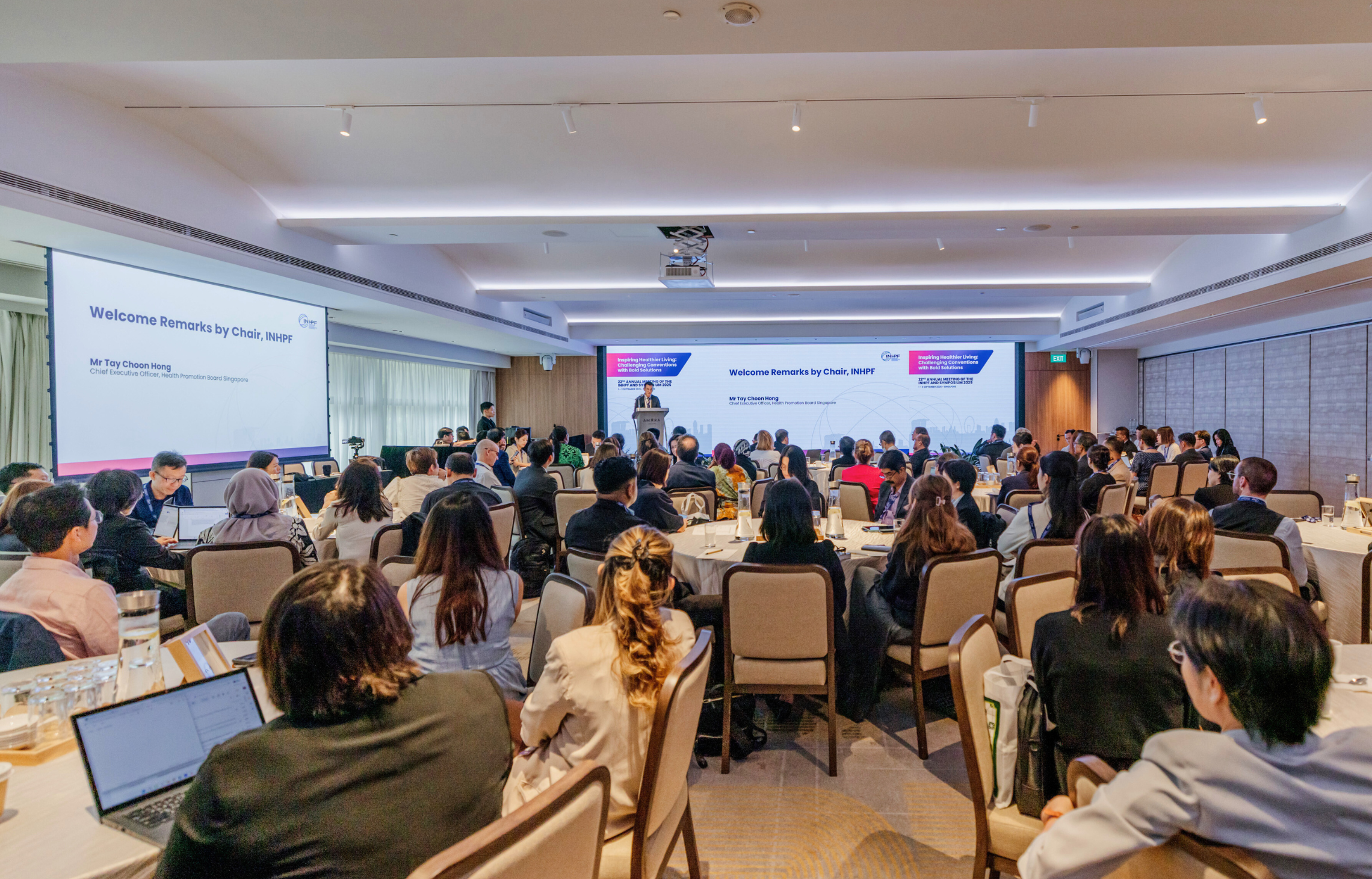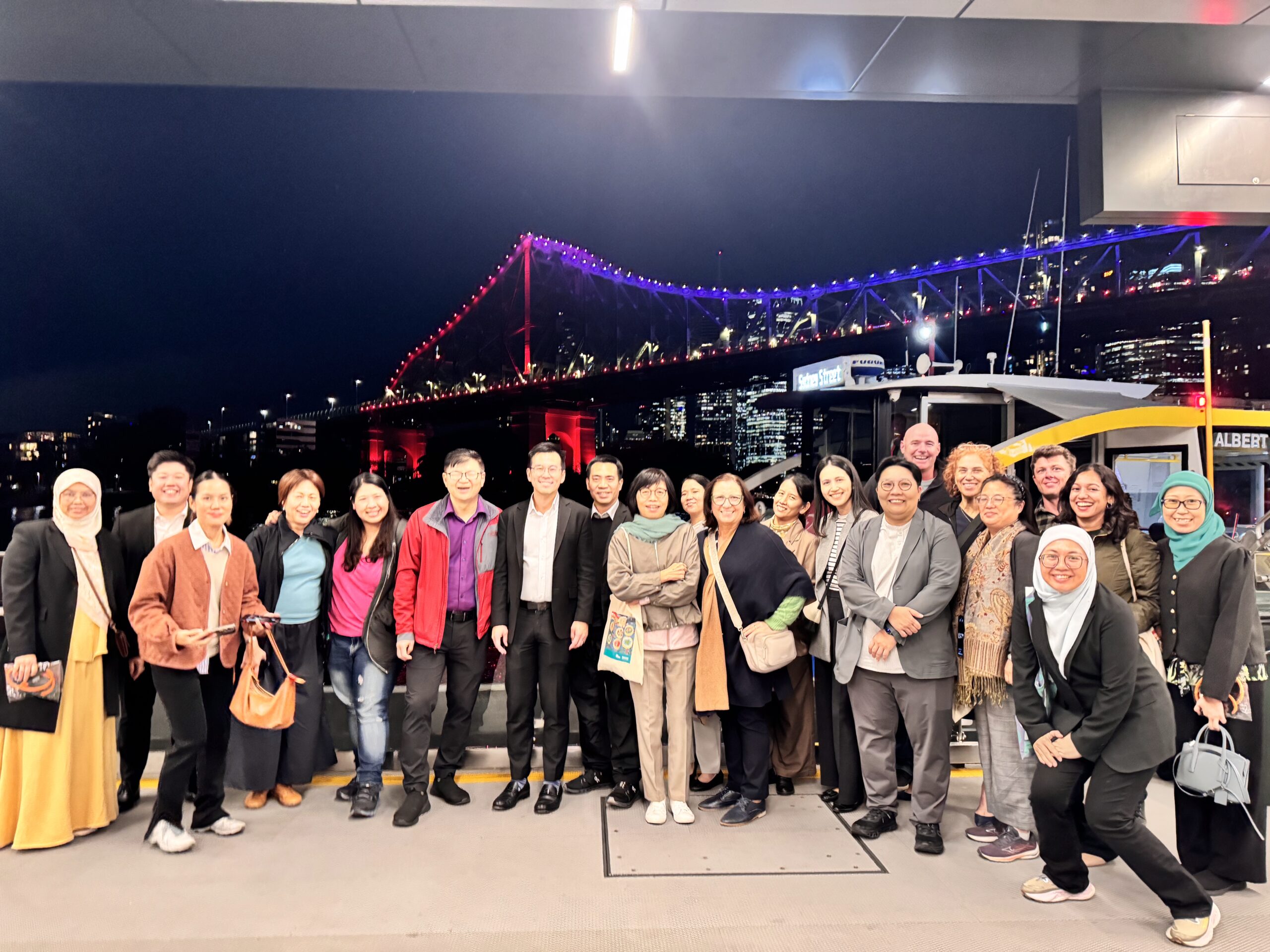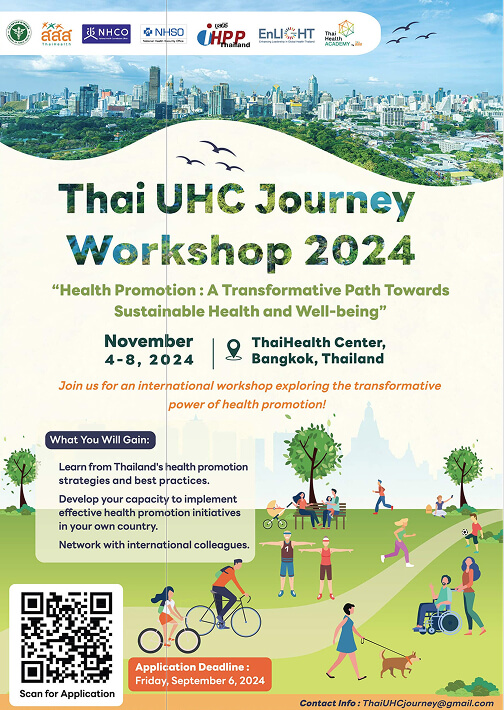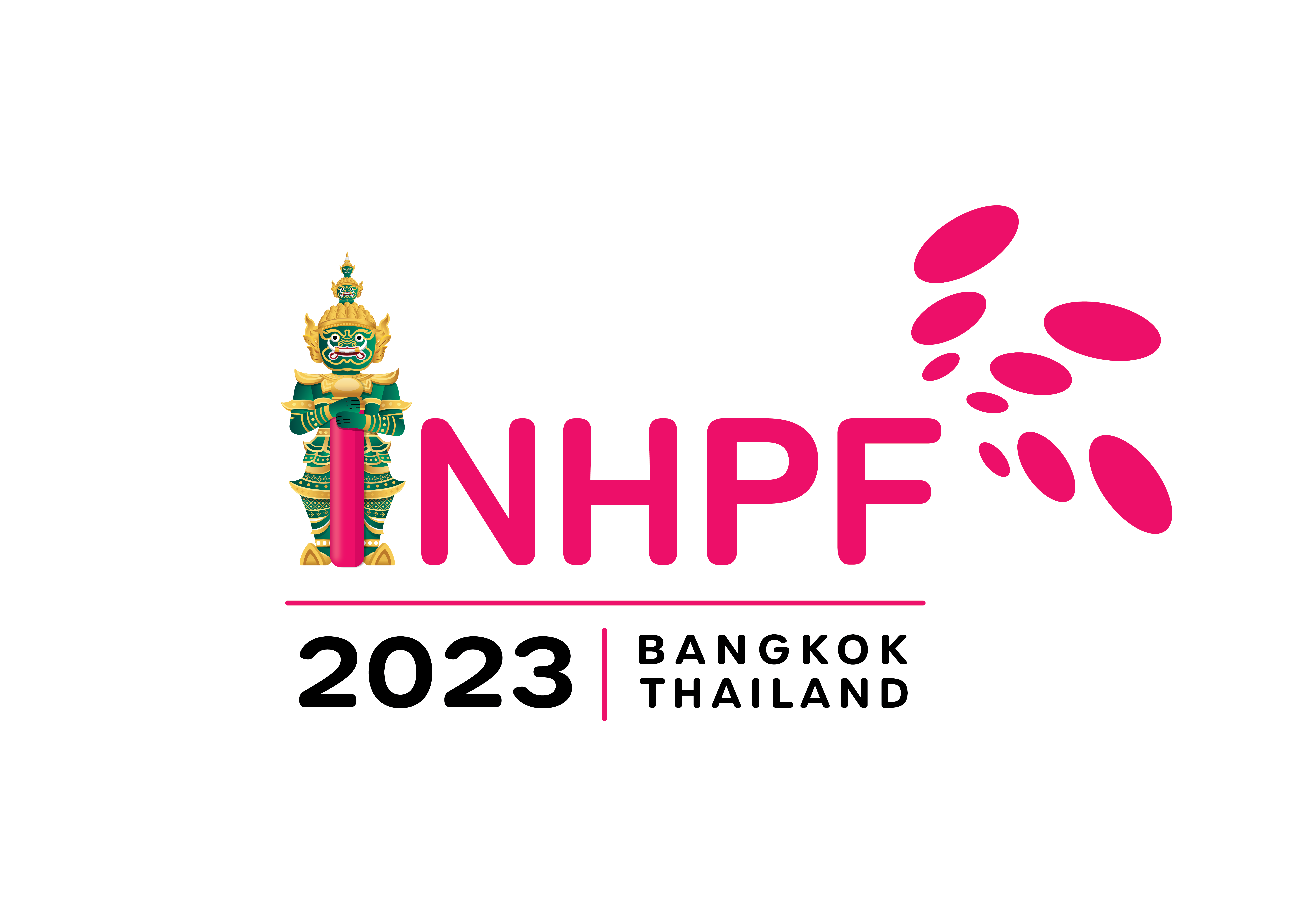1–3 September 2025 | Singapore
Hosted by: Health Promotion Board (HPB), Singapore
In partnership with: Saw Swee Hock School of Public Health, National University of Singapore (NUS)
Overview
The 22nd INHPF Annual Meeting and Symposium brought together more than 119 representatives from Full and Associate Members, ministries of health, academic institutions, civil society, and global partners. Over three days in Singapore, participants exchanged insights, built collaborations, and co-created ideas for healthier communities worldwide.
With the theme “Inspiring Healthier Living: Challenging Conventions with Bold Solutions,” the Symposium highlighted how Health Promotion Foundations (HPFs) and partners are pushing boundaries — designing people-centered approaches to address today’s complex health challenges.
Key Highlights
- Knowledge exchange on urban planning, digital health, and community engagement as levers for healthier living
- Interactive sessions exploring how equity, sustainability, and innovation can be embedded in health promotion systems
- Case studies from across the network showcasing scalable, evidence-based approaches to NCD prevention
- Strengthened connections among members and partners, laying the groundwork for joint action beyond the event
Health Promotion in Action
The meeting was not only about discussion — it also embodied healthy living. Members joined energizing exercise breaks and explored health promotion first-hand through optional site tours that showcased Singapore’s integrated approach to active mobility, green spaces, and healthy aging.
Program
Day 1 – September 1, 2025
9:30 AM to 12:00 PM INHPF CEO Meeting
12:00 PM to 1:30 PM Networking Lunch
2:00 PM to 2:10 PM Welcome Remarks By Chair, INHPF
2:10 PM to 3:10 PM Opening Plenary – “New Perspectives on Tackling NCDs”
To discuss health intersections, with a focus on people-centered approaches.
Walking the Talk on Global NCD Commitment
The presentation will cover three questions:
- Do we need more global commitments and targets to tackle NCDs?
- Why global agencies want more and more new commitments on NCDs?
- Who and how to tip the NCD epidemic?
Dr. Suwit Wibulpolprasert
Vice Chair of the International Health Policy Program Foundation (IHPP Foundation) and the Health Intervention and Technology Assessment Foundation (HITAF), Thailand
Policy Approaches and Best Practices for Creating a Health-Promoting Environment in South Korea
To address health disparities, physical inactivity, and other key public health challenges, Korea promotes a health-friendly environment through public-private partnerships, guided by the national framework, Health Plan 2030 (HP2030).
Mr. Kim Heon Joo
President of Korea Health Promotion Institute (KHEPI)
Scaling NCD Prevention and Health Promotion for Healthier Communities
Noncommunicable diseases (NCDs) remain the leading health challenge in the Western Pacific, driven by preventable risk factors such as tobacco use, harmful alcohol consumption, unhealthy diets, and physical inactivity. Prevention and risk reduction are therefore at the core of sustainable health systems. From the WHO/WPRO perspective, the regional vision—Weaving Health for Families, Communities and Societies in the Western Pacific Region (2025–2029)—highlights the need to scale proven approaches, strengthen HPFs, and accelerate collective action toward healthier populations. Health promotion foundations (HPFs) play a critical role by mobilizing resources, enabling multisectoral action, and fostering community engagement.
Dr. Hiromasa Okayasu
Director, Western Pacific Regional Office, World Health Organisation
Moderator
A/Prof Müller-Riemenschneider Falk
Associate Professor; Vice Dean (Research); Programme Leader (Physical Activity and Nutrition Determinants in Asia), NUS Saw Swee Hock School of Public Health
3:10 PM to 3:40 PM Panel discussion for Opening plenary
3:40 PM to 3:55 PM Afternoon Tea Break & Networking
3:55 PM to 4:55 PM Discussion Track 1: “A Healthy Living Environment That Feels Natural to Everyday Life”
To discuss building a living environment that supports people in adopting healthy behaviours naturally and effortlessly.
Community mobilization for health
The main focal area would be on building sustainable community partnerships with community partners/grassroots to mobilize local communities.
The presentation will focus on how TongaHealth community pool of Zumba instructors was set up; sustainability through strengthening people in their own communities; and communities taking ownership of programs ensuring sustainability There will be a short video played for this segment.
Mrs. Ofeina Filimoehala
CEO of TongaHealth
Reshaping systems for a healthier, fairer Victoria: A VicHealth strategy towards equity and impact
At VicHealth, our approach to addressing health inequity in Victoria is driven by a combination of evidence-based practice, community partnership and place-based investments. Building on historical wins in gender equality, including the ‘This Girl Can’ campaign, our next area of focus includes embedding cultural safety across programs to better support First Nations and multicultural communities across Victoria. Central to our strategy is investment in neighbourhoods and built environments that foster physical activity, connection and wellbeing. This session will offer practical insights into how long term, equity led planning can reshape systems, advance health outcomes, and foster inclusive communities.
Professor Anna Peeters
Chief Executive Officer, Victorian Health Promotion Foundation (VicHealth)
Active Mobility and Healthy Living
As cities face demographic shifts and rising lifestyle-related diseases, daily movement can be reframed as an opportunity to nurture healthier lifestyles. Active mobility is more than just a way to travel, but also a strategy for more sustainable, active and healthy living. This presentation explores how aligning transport and health goals by integrating active mobility into policy and infrastructure design can support long-term benefits not only for the environment but also individuals.
Presentation Outline:
Slide 1: Title
Slide 2: Shaping a Sustainable Land Transport System – Walk-Cycle-Ride Vision
Slide 3: Enhancing Walking and Cycling
Slide 4: Collaboration with Public Agencies to Advance Active Mobility
Slide 5: Co-creating Safe and Conducive Environment for Walking and Cycling
Slide 6: Aligning Transport and Health Goals: Active Mobility as a Pillar of Healthy Living
Slide 7: Studying Transport-Health Nexus to Shape Health Promoting Environments
Slide 8: Nudging Behaviours
Slide 9: World Car-Free Day: A Platform for Greener and Healthier Lifestyles
Slide 10: Moving Forward
Mr. Chan Boon Fui
Group Director Active Mobility, Land Transport Authority
A Healthy Living Environment that is Natural to Everyday Living
This session uncovers how ThaiHealth creates a healthy living environment through cross-sectoral collaboration, data-driven interventions, and accessible public resources. The presentation will focus on three main initiatives that show how health promotion can be integrated seamlessly into daily life.
- “Good Walk” Project: Making Cities Walkable for Better Health
- ThaiHealth Resource Center: Health Literacy at Everyone’s Fingertips
- Co-Investment in Local Health Promotion: Empowering Localities
Dr. Chawetsan Namwat
MD, MPH, Thai Health Promotion Foundation (ThaiHealth)
4:55 PM to 5:30 PM Panel Discussion for Discussion Track 1
Day 2 – September 2, 2025
8:00AM to 9:15AM Breakfast Roundtable – “E-cigarette control: Emerging challenges and potential policy responses”Informal but insightful discussion on emerging e-cigarette “innovations” e.g., drug-laced vapes. The session will also spotlight practical considerations in countering such innovations and other emerging trends, such as through policy and legislation, enforcement, cessation and rehabilitation and public health education/communication.
Combatting e-cigarettes: Driving positive change in Victoria and Australia
Recent developments in Australia and Victoria around e-cigarette regulation and public health efforts are transforming the landscape of tobacco control. Key regulatory changes aim to curb youth vaping and address associated health risks. VicHealth investments with Australia’s leading cessation service Quit target prevention and support for quitting e-cigarettes and tobacco, while our collective impact model drives cross-sector collaboration to strengthen coordinated responses to emerging challenges and inform potential policy solutions across Victoria. Highlighting major campaigns like UNCLOUD, this presentation will offer valuable approaches to reducing e-cigarette use and promoting healthier communities across Victoria and Australia.
Professor Anna Peeters
Chief Executive Officer, Victorian Health Promotion Foundation (VicHealth)
Challenges and opportunities in tackling Vaping
This presentation examines global e-cigarette usage trends and statistics, highlighting current vaping prevalence across different regions and demographics. It reviews worldwide regulatory responses and control measures implemented by various governments to address vaping concerns.
The presentation concludes by identifying major challenges in combating e-cigarette usage, including enforcement issues and emerging market developments. It also explores opportunities for improving current control measures and developing more effective strategies for addressing this public health issue.
Ms. Bungon Ritthiphakdee
Executive director of Global Center for Good Governance in Tobacco Control (GGTC) and Southeast Asia Tobacco Control Alliance (SEATCA)
What’s law got to do with it? Legislating to reduce e-cigarette and vaping harms
This presentation will highlight the role and relevance of law in regulating e-cigarettes. It will lay down key principles from COP decisions on electronic nicotine delivery systems (ENDS) / electronic non-nicotine delivery systems (ENNDS) and the WHO Call to Action on e-cigarettes. The presentation will also talk through key regulatory models that have been adopted by countries such as banning ENDS/ENNDS, regulating through the pharmaceutical regulatory system, regulating within tobacco control laws and regulating less strictly than tobacco products. Lastly, the presentation will outline key considerations for nations when introducing laws and regulations on e-cigarettes including common gaps in legislation and lessons learned from global experience.
- Law and e-cigarettes: Where to start?
- role and significance of law (legislation and litigation) in promoting and protecting the right to health
- key principles from COP decisions on ENDS/ENNDS
- WHO Call to Action on e-cigarettes
- How countries are regulating e-cigarettes
- Different regulatory models adopted by countries:
- Banning ENDS/ENDDS
- Regulating through the pharmaceutical regulatory system
- Regulating within tobacco control laws
- Regulating less strictly than tobacco products
- Factors to consider in regulating e-cigarettes
- Common gaps and lessons learned from global experience
- Key questions to consider in selecting the regulatory model
Ms Hayley Jones
Director, McCabe Centre for Law & Cancer
Moderator
Dr. Yvette van der Eijk
Assistant Professor, NUS Saw Swee Hock School of Public Health
9:30AM to 11:00AM Discussion Track 2 – “Novel approaches to health promotion”
This session explores how social marketing and digital platforms are reshaping youth engagement, with a focus on mental wellbeing. Examine the potential and pitfalls of digital engagement in promoting healthy behaviours among young people.
“Digital Bridges to Mental Well-Being: Empowering Youth and Elderly” – Strategic Actions by ThaiHealth
- Introduction
- Context & Importance: Mental health is a global concern, especially among youth and elderly populations facing different challenges.
- Role of Digital Technology: Emerging tools offer new ways to support mental well-being.
- Purpose: To explore how digital solutions can empower both groups.
- Understanding the Target Groups
- Youth: Struggles with academic stress, social media pressure, and isolation.
- Older Adults: Issues with loneliness, memory, and digital access.
- Digital Tools for Mental Well-being
- Mental Health Apps
- Online Counseling & Teletherapy: Video or chat-based support platforms.
- Social Platforms: Online communities for social connection.
- AI Chatbots: Mental health support tools
- Bridging the Gap
- Inclusive Tech Design: Tools must be accessible to all ages, especially seniors.
- Digital Literacy: Training for both youth and elderly to use tech for mental health.
- Intergenerational Activities: Youth teaching seniors how to use digital tools.
- Supportive Policies & Partnerships: Involvement from government and networks like ThaiHealth.
- Recommendations
- Develop a holistic ecosystem connecting people, tech, and well-being.
- Foster community engagement.
- Design context-appropriate tools, especially for Thai society.
- Conclusion
- Recap key messages.
- Emphasize the importance of cross-generational digital solutions.
- End with a thought-provoking question or inspirational message.
Ms. Niyadar Impetch
Assistant Director of Health Risk Control Section, Thai Health Promotion Foundation (ThaiHealth)
Partnering to support youth mental wellbeing – a case study of leveraging opportunities for intersectoral collaboration
This presentation explores how a public health agency leveraged legislative reform on social media, as a springboard for preventive health collaboration and planning, to support children and young people’s physical and mental wellbeing. Rather than designing a top-down program, Preventive Health SA used its relationships, reputation, and positioning within government to embed wellbeing outcomes into a cross-sectoral response.
Through this presentation, we will share:
- How we used a window of opportunity to progress preventive health.
- How influence, not ownership, can be a strategic asset.
- How partnerships with research and policy players amplify credibility and impact
The presentation will include data, key principles and learnings that can be applied across other jurisdictions.
Mrs. Marina Bowshall
Chief Executive, Preventive Health SA
From Insights to Action – Our Strategic Marketing Approach HPB’s Youth Mental Health Campaign Journey
- Introduction:
- Background & data: Post-COVID, Singapore faced not only a physical health crisis, but a growing mental health one, especially among youth.
- HPB’s action & objective: Launched a nationwide campaign in Oct 2022 to normalise mental health conversations and encourage help-seeking behaviour.
- Key Campaign Elements:
- Targeted audience: Youth aged 15-24
- Marketing strategy: Campaign main burst – an integrated digital strategy across multiple youth-centric touchpoints – gaming and music streaming platforms, social media and location-based targeting near educational institutions. Always-on marketing strategy – School activations, peer support training, year-long digital marketing (SEM/SEO), online toolkit (MindSG portal).
- Content design: Authentic peer stories, content and influencer partnerships
- Impact & Learnings
- Key success metrics: % of youth willingness to seek help after the campaign, page lands to campaign webpage and engagement rate.
- Youth’s engagement preferences: Non-professional support channels were preferred, self-help tools/resources and emotional narratives drove the highest engagement.
- Conclusion
- 2025 focus: Planting seeds of resilience and building an empathetic support network. Our journey evolves and expands from encouraging help-seeking behaviour to enabling help-giving among youths.
Ms. Ina Se
Assistant Director, Branding and Corporate Marketing, Health Promotion Board, Singapore (HPB)
Moderator
A/Prof Mary Chong Foong Fong
Associate Professor; Assistant Dean (Education); Programme Director of Master of Public Health (MPH), NUS Saw Swee Hock School of Public Health
11:00AM to 11:15AM Morning Tea Break
11:15AM to 12:15PM Discussion Track 3 – “Research, data and impact analysis”
This session highlights the importance of data and research in shaping effective policies and measuring long-term outcomes, and looks at how the same can be translated into evidence-based interventions and practice.
Implementing a unified strategy for metabolic syndrome management
To reduce the incidence of major chronic diseases, Taiwan has implemented policies targeting key risk factors. Through adult health check-ups, we identify individuals with conditions that may progress to chronic diseases, such as metabolic syndrome.
Since July 2022, we launched the “Metabolic Syndrome Management Program”, which uses financial incentives to support primary care physicians in collaborating with patients to set personalized health goals, focusing on diet, physical activity, and overall lifestyle, based on each patient’s health status.
Digital care tools are integrated into the program to enhance ongoing patient monitoring, provide real-time feedback, and facilitate communication between patients and healthcare providers. This approach empowers patients to play an active role in their own care, adhere to health plans and make timely adjustments to reduce risk factors. This patient-centered approach enables individuals to play an active role in managing their health, addressing risk factors early and ultimately delaying the onset of major chronic diseases.
Focus areas:
- Early Intervention for patient with metabolic syndrome
- Chronic disease management enhanced by digital support
Mr. Eddie Yang-jiun Mai
Researcher, Health Promotion Administration Ministry of Health and Welfare, Taiwan (HPA)
12:15PM to 1:45PM Networking Lunch
2:00PM to 4:00PM Discussion Track 4 – “New solutions to old problems: food and systems approaches”
This track brings together diverse experiences to reimagine how we tackle longstanding public health issues like unhealthy food environments and fragmented health promotion systems. Learn how governments, communities, and corporations are scaling impact by approaching these challenges differently.
Putting Food First for health, equity and our natural environment
While the state of Victoria is Australia’s largest producer of food, across our cities and regional towns there is a growing disconnection between communities and the food they eat. Poor diet is a leading disease risk factor, and one in four Victorians worry about running out of money to buy food. As the world’s first health promotion agency, VicHealth has identified taking action on ‘food systems’ as one of three organisational priorities to drive fairer health outcomes with and for Victorian communities. Together with partners, VicHealth is using multiple levers to build collective food system action to both limit the increasing dominance of ultra processed foods, and invest in scalable local initiatives that make fresh, healthy food a priority for people and communities.
Ms. Sharon Laurence
Public Health Nutritionist, APD, Food Systems Manager, VicHealth
Promoting elderly nutrition, healthy eating and physical activity in the community.
Non-communicable diseases (NCDs) pose a significant global health challenge and severely affect the health of the elders. In alignment with the WHO 2030 Sustainable Development Agenda, the Health Promotion Administration, Ministry of Health and Welfare (HPA) has adopted a proactive policy approach to address these challenges by improving the population’s intake of essential nutrients, promoting healthy body weight, and increasing levels of physical activity. Subsidy for local governments to set up Community Nutrition Promotion Centers and Senior Fitness Clubs, we assess local nutritional needs and provide context-specific, diverse nutrition services to promote public health.
Focus Areas:
- Promoting community Nutrition services, establishing Community Nutrition Promotion Centers.
- Promoting Elderly Physical Activity, establishing Senior Fitness Clubs.
- Developing localised community health care models. Connecting with community resources to help community residents establish healthy eating habits and improve their health status
Ms. Vivian Chia-Hsiu Liu
Division Director, Community Health Division, Health Promotion Administration (HPA), Ministry of Health and Welfare, Taiwan
From Policy to Plate: Industry Insights on Making Healthier Choices Practical and Scalable
This presentation offers a frontline industry perspective on how public health policies can be effectively translated into practical solutions within the food and beverage sector. Lim Ye Sen, co-founder of Faesol Pte Ltd (iLite), shares his company’s decade-long journey responding to Singapore’s “War on Diabetes” by developing lower-sugar beverages and lower-sodium salt alternatives. The talk explores key challenges in product reformulation, real-world adoption of the Nutri-Grade labelling system, and innovative tools like the Nutri-Grade Calculator app designed to support foodservice operators. Lim highlights the importance of collaboration between health promotion foundations, governments, and industry to drive scalable, commercially viable innovations that benefit both public health and business growth.
- Introduction & Context
- Overview of Singapore’s nutrition challenges (sugar & sodium consumption)
- Importance of industry involvement in health promotion
- Responding to the War on Diabetes
- Launching lower-sugar beverages in 2016
- Overcoming taste and market perception challenges
- Nutri-Grade Labelling: Opportunities and Tools
- Impact of Nutri-Grade on product reformulation
- Development and future expansion of the Nutri-Grade Calculator app
- Expanding Health Focus: Sodium Reduction with iLite K Salt
- Product benefits and industry adoption
- Making healthier choices easy for foodservice operators
- Lessons Learned and Collaboration for the Future
- Importance of early industry engagement
- Need for practical, scalable solutions
- Call for open collaboration between stakeholders
- Conclusion and Call to Action
- Aligning health goals with commercial viability
- Invitation to work together for a healthier future
Mr. Lim Ye Sen
Co-Founder, Faesol Pte Ltd (iLite) – Singapore
Food Environments and a Systems Approach: Turning Prevention into Impact
(pre-recorded presentation)
This keynote presentation explores how Health and Wellbeing Queensland is driving systems-level change to create healthier food environments across community, healthcare, and remote settings. With rising rates of non-communicable diseases (NCDs) placing critical strain on global health systems, now is the time for bold, coordinated prevention efforts. Grounded in the belief that health must be embedded as a system-wide priority — not just an adjunct — the presentation shares real-world examples of action-oriented initiatives that are transforming environments where people live, learn, work and play.
Key case studies include:
- A Better Choice: Shaping retail food environments across hospitals, schools, and sport venues — leading to healthier purchasing behaviours and improved food access.
- Gather + Grow: A whole-of-system response to food insecurity in remote Aboriginal and Torres Strait Islander communities, driving measurable improvements in healthiness of food stores and local health equity.
Key themes include:
- Why food environments are a powerful lever for chronic disease prevention
- The importance of policy, partnership, and place-based action
- How systems thinking can scale local change into sustained, population-level impact
Takeaways:
- Systems change is essential to reverse the NCD crisis
- Prevention must be both practical and embedded
- Aligned efforts across settings — from schools to hospitals to remote stores — create consistency and impact
- Community-led, cross-sector approaches deliver scalable, lasting results
With a call to unite globally, the session reinforces the shared responsibility of health promotion leaders to shape environments that make the healthy choice the easy choice — for all communities, everywhere.
Dr. Robyn Littlewood
Chief Executive Officer, Health and Wellbeing Queensland
This presentation will trace Malaysia’s journey in front-of-pack nutrition initiatives, beginning with voluntary efforts such as the Healthier Choice Logo (HCL), front-of-pack energy icon, and the Healthier Dining Programme, complemented by fiscal measures like the sugar-sweetened beverages (SSB) tax. Building on these foundations, Malaysia is now moving towards the mandatory implementation of the Nutri-Grade labelling system to further empower healthier consumer choices. The session will highlight the policy rationale, lessons learned, and anticipated impacts of Nutri-Grade, while reflecting on challenges and opportunities in shaping a healthier food environment.
Encik Nazli Suhardi bin Ibrahim
Deputy Director (Community Nutrition & Inter-Agency), Nutrition Division, Ministry of Health Malaysia
Moderator
Mr. Terence Ng
Director, Innovation Office; Policy & Strategy Development
4:00PM to 4:15PM Afternoon Tea Break
4:15PM to 4:45PM Closing & Address By Chair, INHPF
7:00PM onwards Appreciation Dinner for INHPF members
Day 3 – September 3, 2025
9:30AM to 12:00PM Optional Site Tour – Topic(s): Built environment and active living.
Community integration & cultural approach
Tour themes include:
Built environment & active living – Visit to Punggol District
Hosted by the Land Transport Authority (LTA)
Built environment & active living – Visit to Jurong Lake Gardens
Hosted by the National Parks Board (NParks)
Healthy ageing – Visit to an Active Ageing Centre
Hosted by the Health Promotion Board (HPB)
Moving Forward
The 2025 Annual Meeting reaffirmed INHPF’s collective commitment to advancing prevention-focused, equity-driven, and system-wide strategies. Together, we are building stronger public health systems and shaping healthier societies across Asia-Pacific, Africa, and beyond.
Stay tuned for the 2026 Annual Meeting and follow INHPF on LinkedIn for upcoming news, stories, and opportunities to collaborate.





